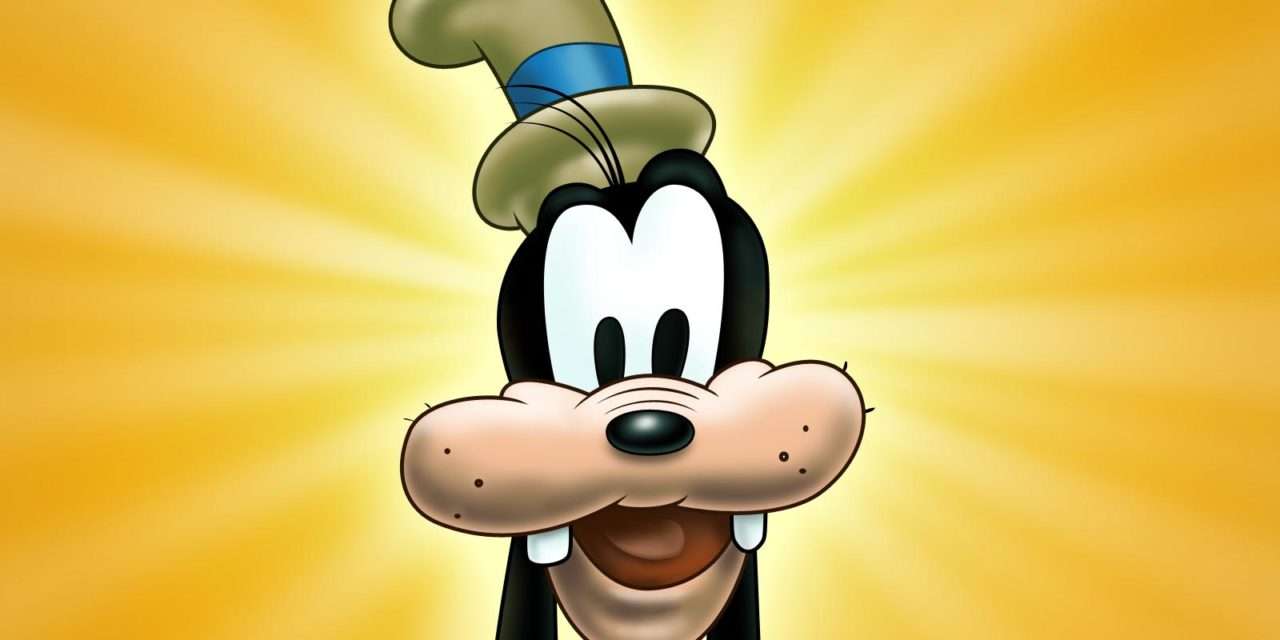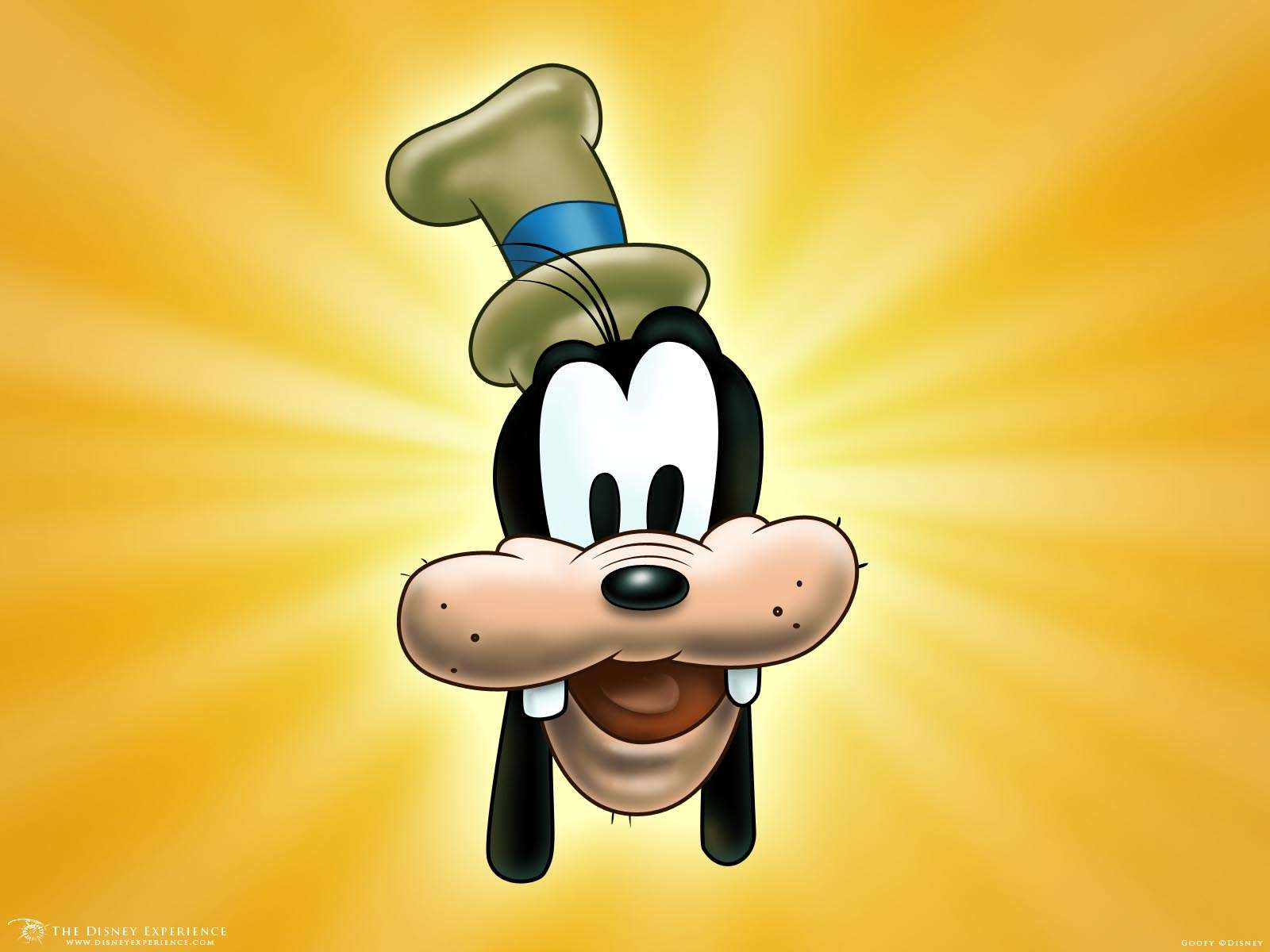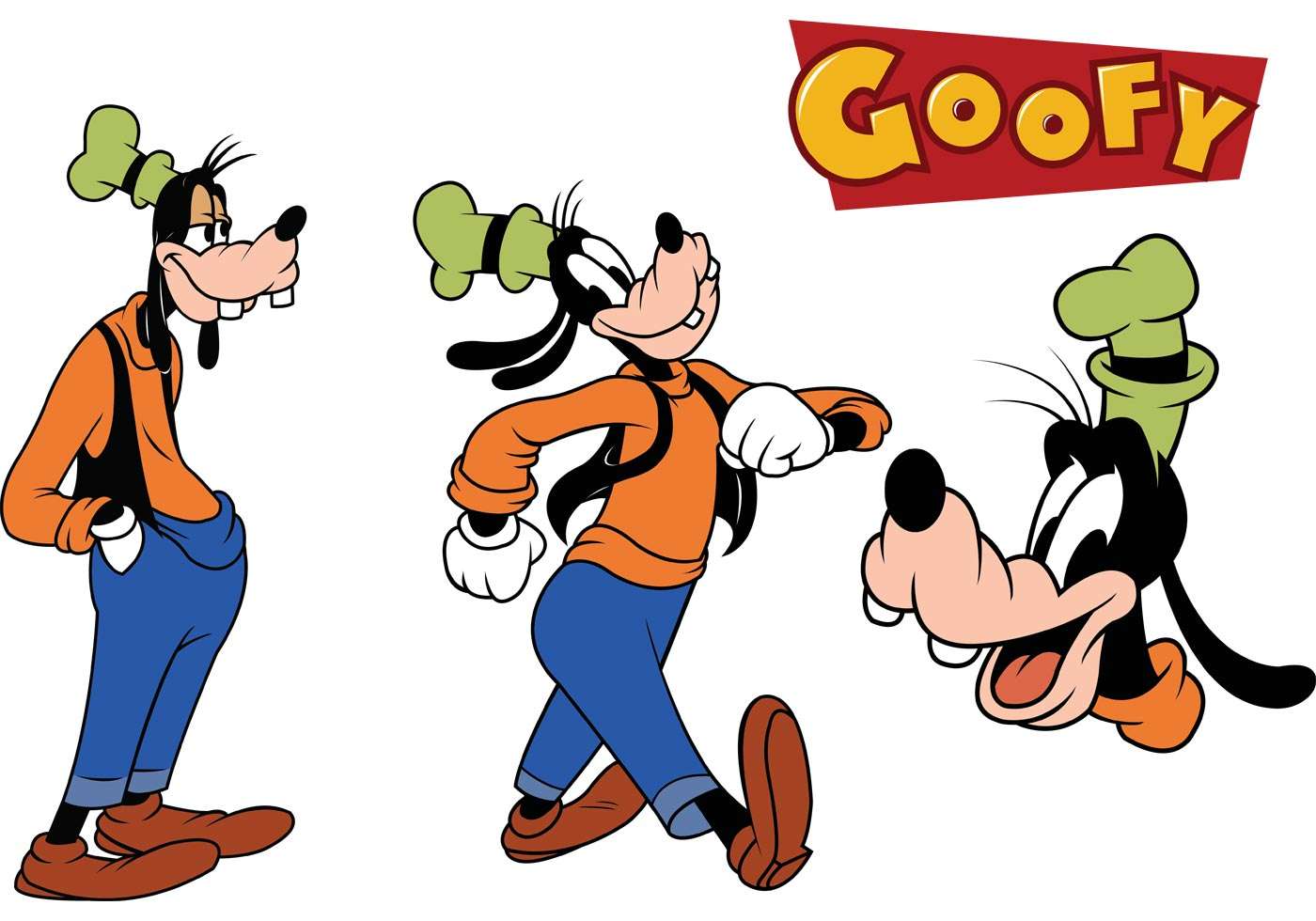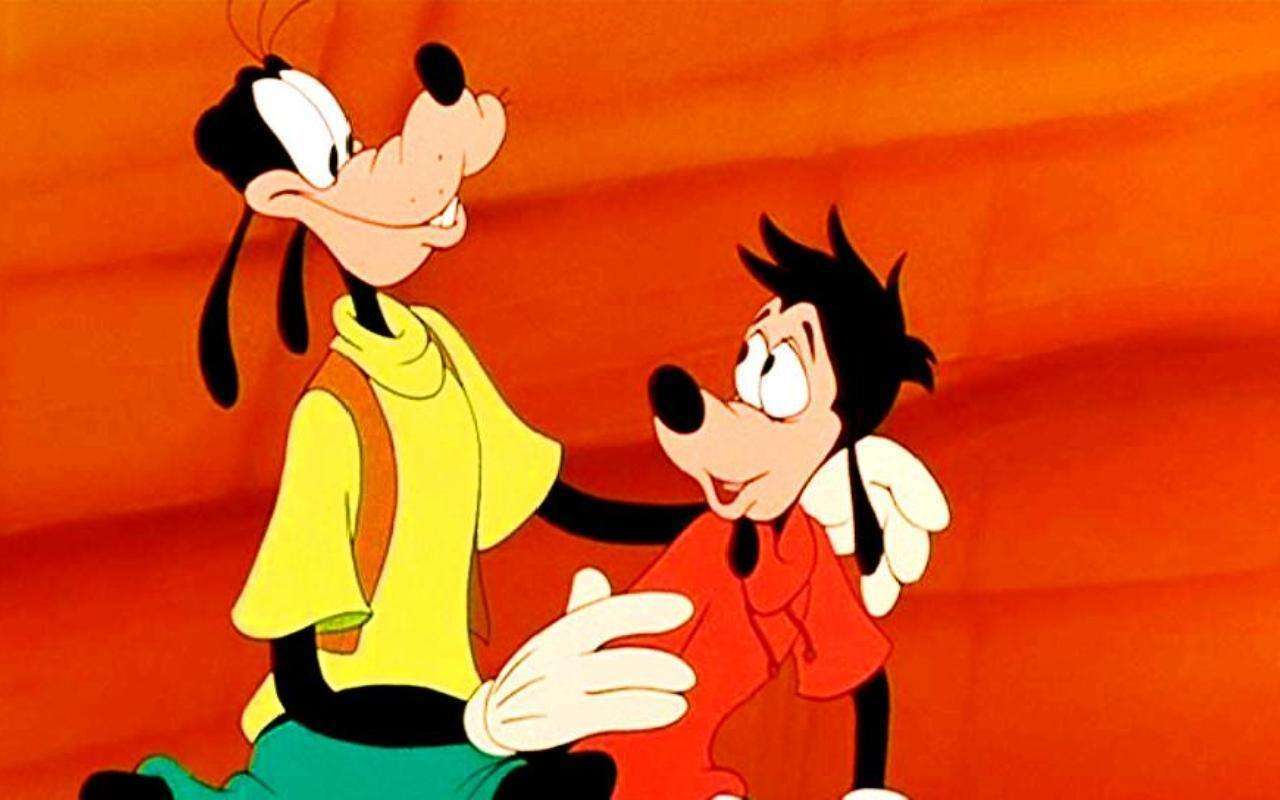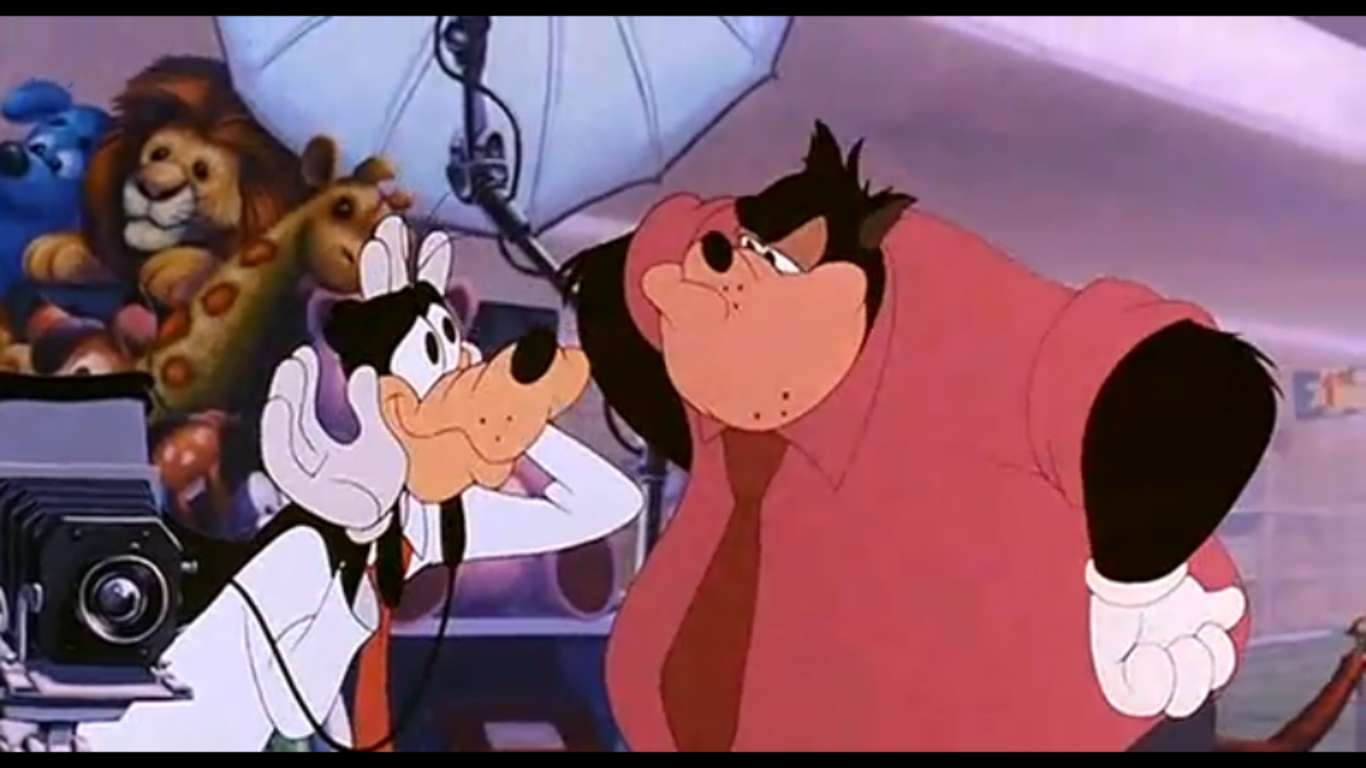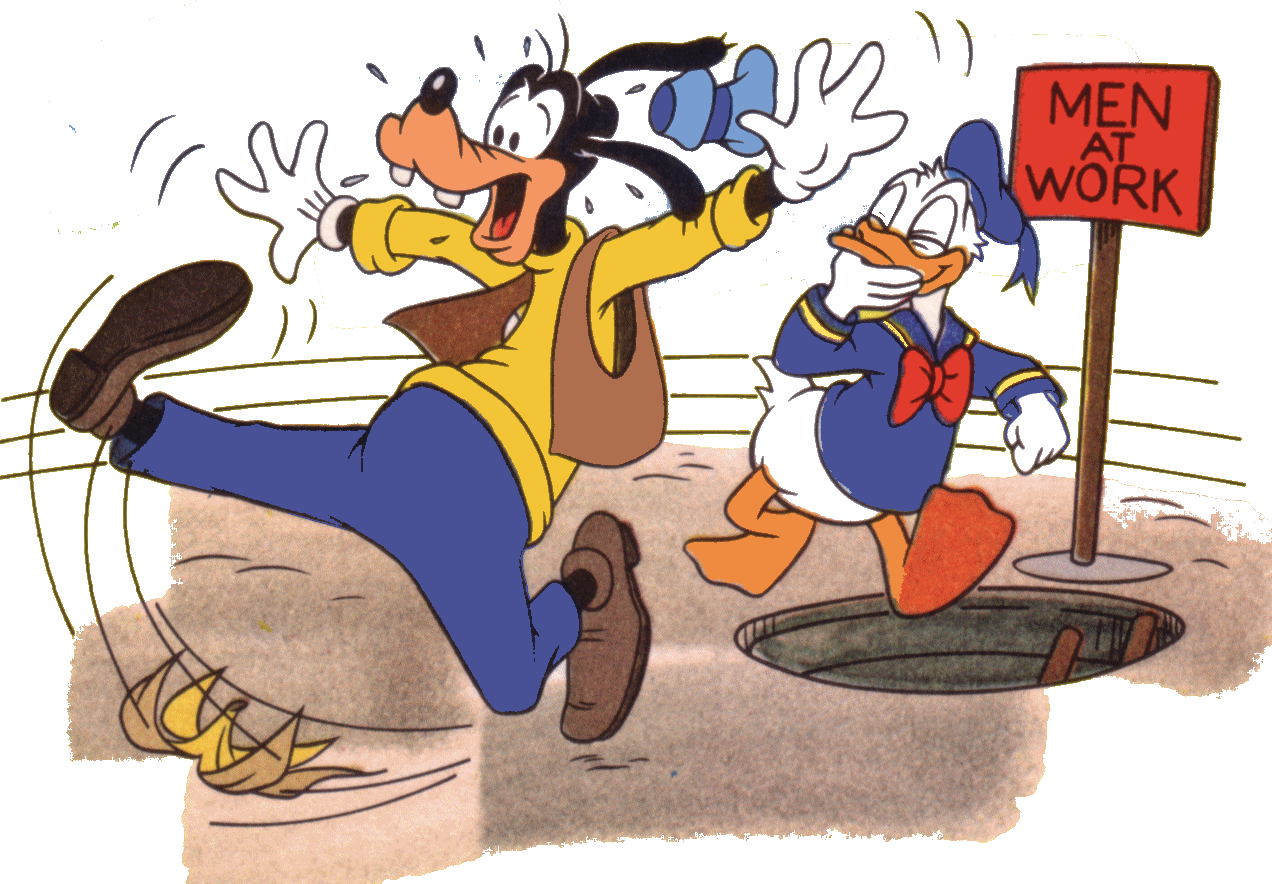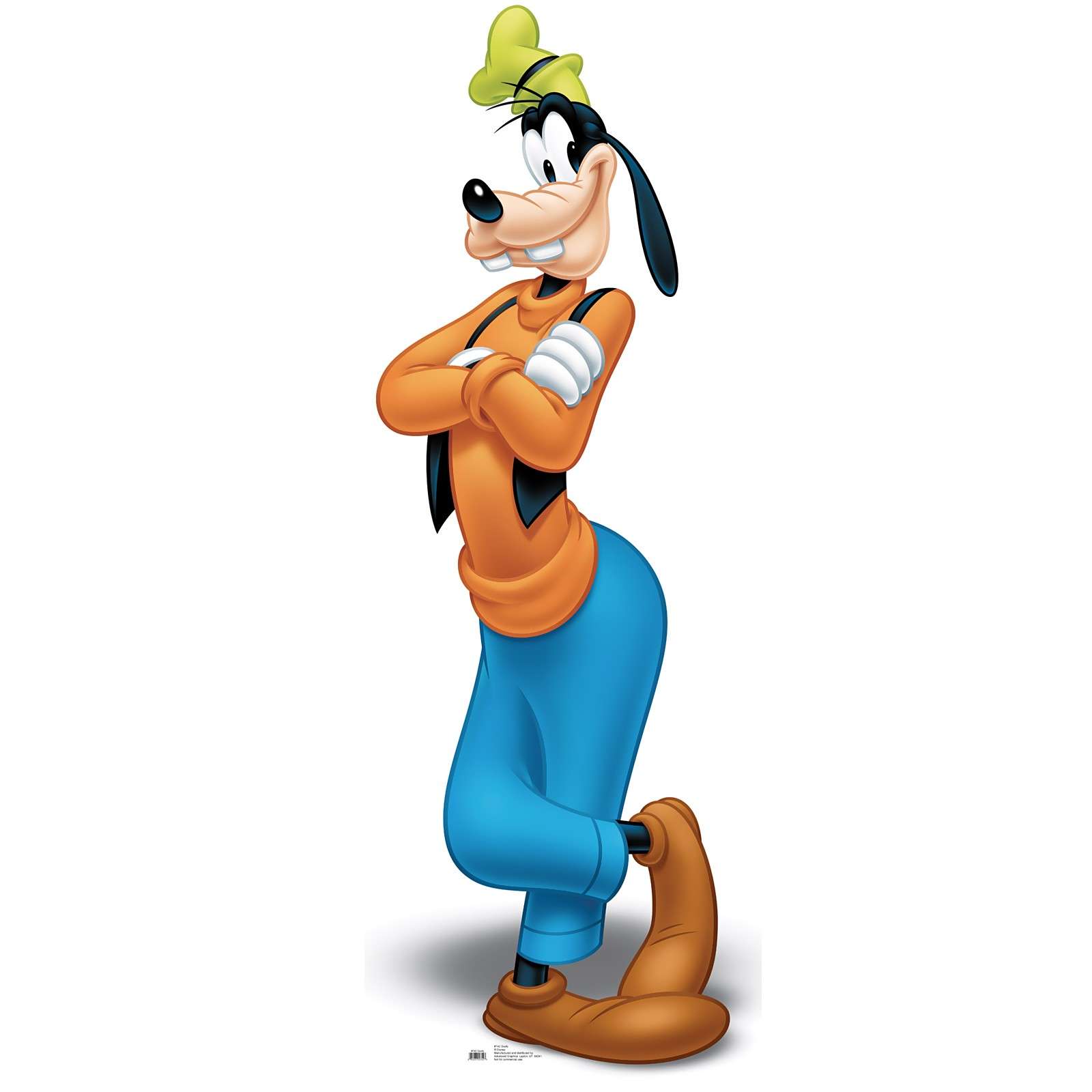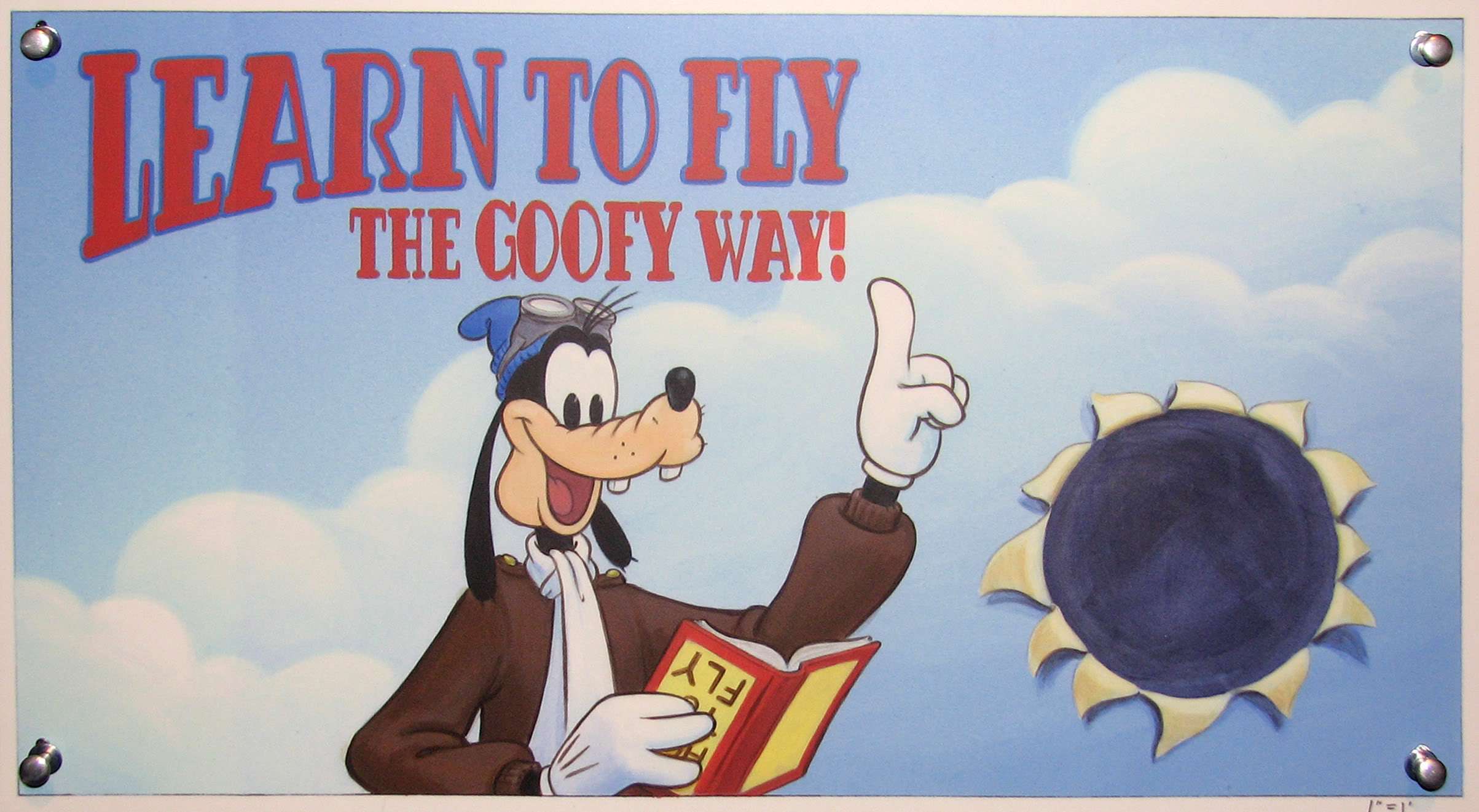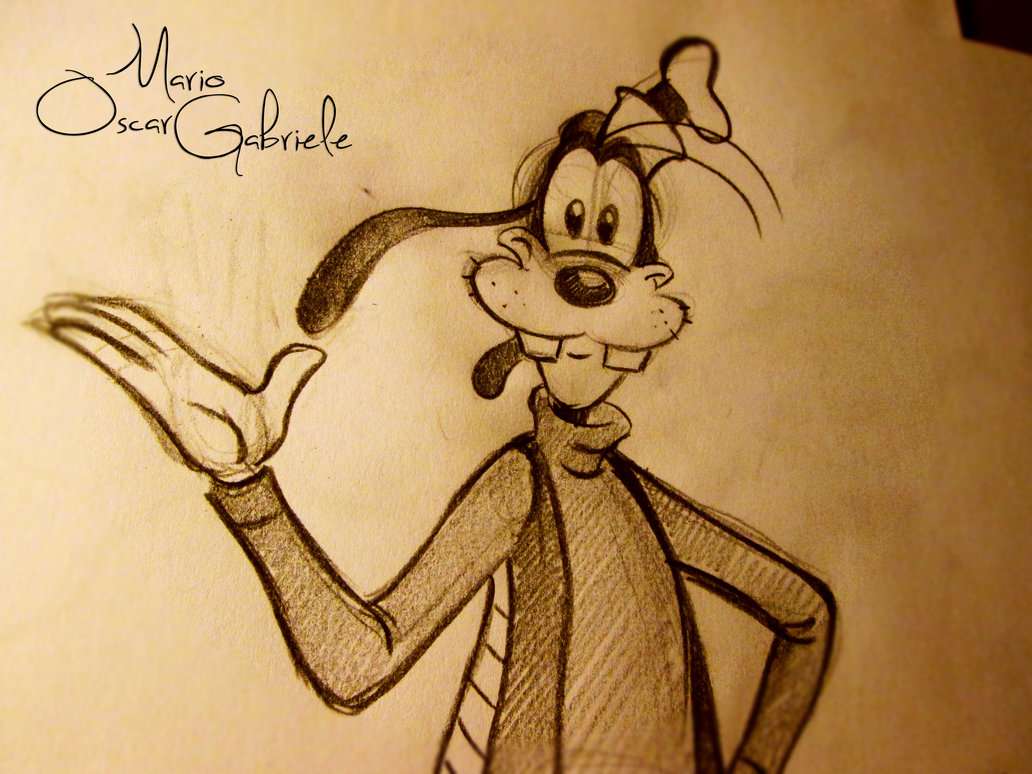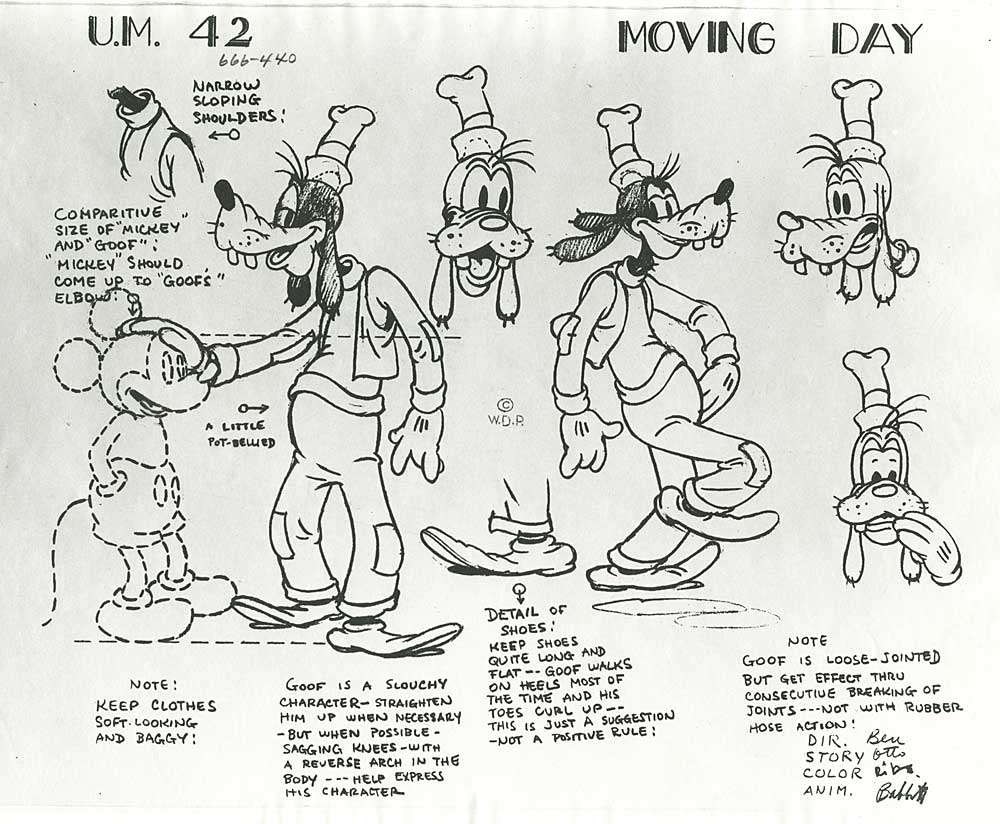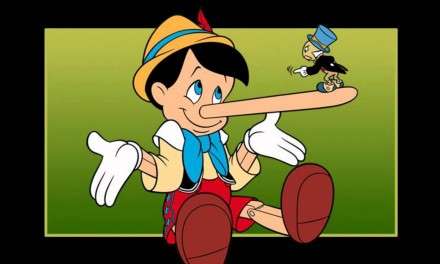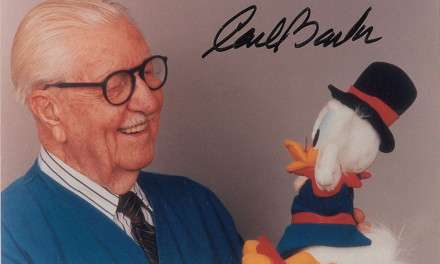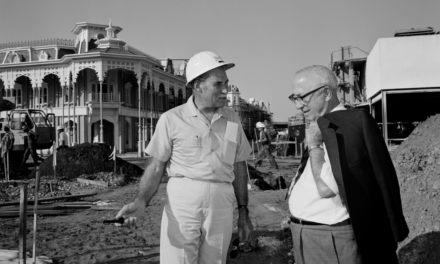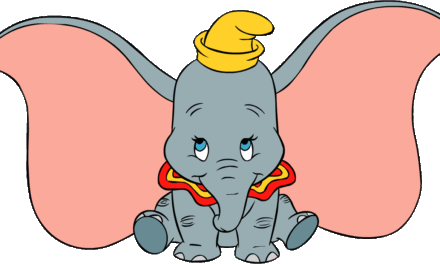When you really think about it, the Characters in the Walt Disney Company’s stable are simply amazing. Throughout the history of the studio, they have given the public the world’s most beloved and memorable cartoon personalities in the history of animation. From “Alice” in the Alice comedies of the early 20’s to Frozen’ Elsa, Olaf and Anna, they are trumped by no others.
Even such minor characters during the early days, i.e. Clara Cluck, Mickey’s nephews Morty and Ferdie, Clarabelle Cow etc, are still important to the Disney story and history. Walt’s love of the farm and its animals are the reason for so many early shorts revolving around the farm and barnyard, hence the anthropomorphic characters we have grown to love. Mickey was created to fill the void when Oswald the Lucky Rabbit was taken (Legally) from Walt by Charlie Mintz and Universal Studios. But the most interesting and popular character in the Disney Stable, and part of the now famous Disney; “Fab Five” (Mickey, Minnie, Donald, Pluto and Goofy) was created from an “extra” in the audience from the early Mickey short released May 25th, 1932 called Mickey’s Revue, directed by Wilfred Jackson. Like many of the early Mickey shorts, this featured Mickey showcasing music and dance routines on a stage.
During Mickey’s performance, an obscure character, who if you have seen the short, looks remarkably like the Goofy we know today, and resembles the audience his is sitting with. The running gag was that his eating peanuts and crunching them loudly and laughing the same way, annoyed fellow spectators so much that they knocked him out with mallets and laughed as they did. This early “Goofy” had granny glasses, older looking, wearing just a skimpy vest, but had that trademark hat, and was missing those two large “Teeth” his is famous for. It was the characters rancorous laughter that would define him till today.
Whether this extra character was developed initially as a new additional character at first, or just part of the short, (This is my own opinion), the Disney artists saw the possibilities of this extra, and named him “Dippy Dawg” He was later re-imagined into a younger character. He then appeared in the short the “Whoopee Party” as a party guest, released on September 17th, 1932, and that famous laugh was provided by Pinto Clovig. Dippy Dawg made four bows in 1932, and additional two in shorts shown in 1933, but these parts were mainly bit parts. But in the short “Orphan’s Benefit” released on August 11th 1934, his seventh appearance, his name was changed to Goofy and he segued into a regular member of the Mickey gang, with Donald Duck
and Clara Cluck
.
The Disney animator who is viewed as the creator and development of the character is Art Babbitt. The original drawings of the character came from the pen of artist, Frank Webb. Mickey’s a mouse, says one of the kids in the movie Stand by Me, Donald’s a duck. Pluto’s a dog. So what is Goofy? Disney animator Art Babbitt in a 1930’s memo explained… “Think of the Goof as a composite of an everlasting optimist, a gullible Good Samaritan, a half-wit, a shiftless, good-natured colored boy and a hick,” he told his staff. “His brain is rather vapory. He laughs at his own jokes, because he can’t understand any others. He is very courteous and apologetic and his faux pas embarrass him, but he tries to laugh off his errors. He talks to himself because it is easier for him to know what he is thinking if he hears it first.” He was a holy fool, a sort of Thirties Gazza, though he was not to “drool or shriek”. As to what he looked like, Babbitt admitted “a vague similarity” between “the Goof’s head and Pluto’s”. But their animation was to be “entirely different”. “One is dog. The other, human.”
That classic Goofy voice was first provided Pinto Clovig, from 1932 to 1939. Unfortunately in 1939 Colvig had a falling-out with Walt Disney and left the studio, leaving Goofy voiceless. Leonard Maltin, film critic and historian noted that this heralded in the “How To” series of cartoons in the 40’s where Goofy would try to explain how to do everything from riding a horse, playing football, even ski. With little or no dialogue needed, except for some reused Clovig voice tracks, a narrator (Most likely John McLeish) made things workable. After Pinto left the studio, voice actor George Johnson voiced Goofy from ’39 to ’43. In 1944, Clovig returned to the studio and voiced Goofy until 1965 (Last short, Freeway Troubles), Bob Jackman voiced a few shorts in the ‘50’s. Hal Smith continued voicing Goofy after Clovig’s passing in 1967. From 1986 to 1988, Will Ryan took over voicing duties. In the 1979 Disney Album Mickey Mouse Disco, and in sport Goofy, Soccermania in ’87 and Who Framed Roger Rabbit in 1988, Tony Pope did the dialog. Bill Farmer has been voicing Goofy ever since 1987.
Goofy’s famous signature holler, “Yaaaaa-hoo-hoo-hoo-hooey!” was recorded by Austrian Alpine ski racer and yodeler Hannes Schroll. Goofy’s classic phrases are “gawrsh!” And along with “ah-hyuck!” his classic chuckle cements him into our minds. During the early 50’s, some Goofy shorts have Goofy with a normal human voice, but that was short-lived. His normal voice returned after a few shorts.
The name of Goofy most likely came from Walt himself. He often labeled the humor in his cartoon shorts as being “Goofy” and that name stuck with his role in Orphan’s Benefit. But Art Babbitt fleshed out Goofy’s personality and role in the 1935 Short Moving Day, cementing him as a new star for Walt.
There was a spat of shorts with Donald, Goofy and Mickey together. Starting with Mickey’s Service Station, released on March 16th1935. Other shorts, Mickey’s Fire Brigade
, Mickey’s Trailer, Moose Hunters, Clock Cleaners, Lonesome Ghosts and the Boat Builders showcased the trio. But due to many factors, Donald and Goofy overshadowed Mickey and the last short they appeared together was the Whalers, released on August 19th, 1938.
In the 1950’s Goofy was gradually transformed into a regular “Family Man”, thanks to Walt Disney Himself. He hoped that allowing Goofy to face every day dilemmas, i.e. marriage, children, dieting, etc, would inject personality into the Goof. During several 1950’s shorts portraying Goofy as a family man, Goofy’s wife dies. Later on in the series “Goof Troop” depicting how Goofy and his son Max bond together, he tells his son…”She’s up in there with the stars” therefore, we now know Goofy is a widower. Also during the “50’s” era, so to speak you will notice that although the Goofy short cartoon opening credits began with “Walt Disney presents Goofy”, he was usually referred to as George Geef or G.G. Geef. This might infer that “Goofy” was a nickname. In the short “Goofy Gymnastics” in 1949 he is seen signing a coupon with the name James Boyd. In the Goof Troop series, his full is given as Goofy Goof, or G.G. Goof. In the comics of the 2000’s, his name is sometimes given as Goofus D. Dawg.
Fans also noticed Goofy’s persona and physical looks were revamped during this period. He had flesh colored skin instead of fur, appeared more intelligent, eyebrows with smaller eyes. Even his voice changed a bit. In some of the shorts, he was sans his trademark pair of external teeth, droopy ears and white gloves.
As his popularity rose, Goofy began to appear in many movies. A Goofy Movie, An Extremely Goofy Movie
, The Three Musketeers and Mickey’s Twice upon a Christmas
to name a few. He had cameos in the Little Mermaid
and Who Framed Roger Rabbit
. He also had a quick spot in The Lion King 1 ½
. Goofy was also huge on television, some of his credits are Mickey Mouse Works, Goof Troop, The Mouse Factory
and the House of Mouse. Goofy was also in the comics. In the comic strips drawn by Floyd Gottfredson, he was portrayed as Mickey’s sidekick, replacing Horace Horsecoller. A short run in the ‘90’s comics by Disney called Goofy Adventures. In video games, Goofy is appears in the Kingdom Hearts series. He was in an early game, Matterhorn Screamer for the Apple ll and Commodore 64. He also graced the Nintendo GameCube and Game Boy Advance platforms.
In the parks, Goofy is a meetable character. He has his own candy company in Disney Springs. In the defunct Mickey’s Toontown in the Magic Kingdom, he had a ride called Goofy’s Barnstormer, which was re-imagined into the Great Goofini. He also has meet and greets at Pete’s Silly Sideshow as the Great Goofini.
Some quick trivia… Goofy is presently the only member of the Classic Disney Shorts to have his own movie. While Goofy is famous for his exclamation “Gawrsh!” he sometimes can be heard saying “Gosh. The only times Goofy is referred to being a dog are in early shorts, in an episode of Mickey Mouse Clubhouse, a Toon Disney commercial for Goof Troop, Who Framed Roger Rabbit, and by Hades in an episode of House of Mouse. Current sources, including the Goof Troop television show and A Goofy Movie, give the character’s full name as Goofy Goof. The Goof Troop pilot also refers to G. G. Goof on a diploma, likely a reference to the 1950’s name. Goofy’s mother made an appearance in the Mickey Mouse Works cartoon How to be Groovy, Cool and Fly. Even though Goofy has been romantically linked with Clarabelle Cow, he has dated a couple of women in the Goof Troop series; he doesn’t have a current girlfriend, making him the only member of the original Disney trio not to have one. And Goofy is the only character from the Mickey Mouse gang to have a son instead of a nephew or niece. The color of Goofy’s vest has been erratic over the years. It is officially black, but in some appearances such as Mickey Mouse Clubhouse, his vest is a light brown, and in the Theme Parks and in Kingdom Hearts, it is yellow.
It’s been 84 years since that obscure “extra” in Mickey’s Revue has raised to the heights of popularity today, known as our beloved Goofy. It’s just another example of the magic and wonder Walt Disney has left to the world.

